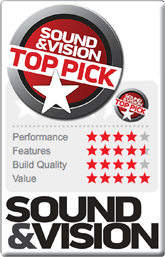Safety & Common Sense Matter
A moment or two of consideration will go a long way. Please be safe! OutStandingScreens™ has taken the time to consider safety and quality throughout product development. A certain amount of personal responsibility is expected from you. Only use OutStandingScreen™ screens, ropes, poles, and hardware. Your OutStandingScreen™ is not designed for permanent outdoor installation.
Children should not play around the anchor points for obvious reasons--ropes and stakes. Even though designed for safety, good judgment should be exercised around your screen, just as for a volleyball net or similar tethered item.
Look up, look around, and down!
Look up to check for electrical wires and tree limbs and look around for other potential problems. Always consider where a screen might land if there's an unexpected change in the weather. Also, consider underground obstacles like soaker hoses, low voltage lighting wires and the like when choosing locations to drive stakes.
Before You Set Up
Choosing Your Location
The first step is to imagine the possibilities! Sit where your audience will be sitting and decide where you want your screen. Next, decide whether the location will work for other reasons; every situation is different. We suggest testing your setup before your first showing. Last-minute surprises are best avoided.
Things to Consider
- What throwing distance specs does your projector have?
- How wide or deep of an area do you have to work with?
- What obstructions exist in the planned area?
- Where do you have electricity for the projector and stereo?
- Where can you place speakers and run speaker wire?
- Will there be foot traffic or water near your wiring?
- If you don’t use stakes, what anchors* can you substitute?
- Where will your audience sit?
- What locations are available for your projector?
* Alternate anchor points can be used, but they should be permanent in nature.
Front or Rear Projection?
If you choose rear projection, a low-angle projector aiming upward is best. Think of your projector as a flashlight. If you aim the flashlight into the audience’s eyes, they will see the light source. If you put the flashlight low, angled upward, then the “flashlight” is aimed above your audience's head. Test your arrangement before movie night arrives! Generally rear projection is little trickier than front projection. If you have questions give us a call!
OutStandingScreens Set-up
If you don't want to read our instructions, watch this set-up video instead.
OutStandingScreens™ have been designed to offer a versatile and forgiving outdoor setup. Following is a simple and direct method using stakes in an open area. Once you have staked out your best location, the screen itself goes up with ease. A few adjustments here and there and the next thing you know you're standing next to an outdoor screen over 11 feet tall. The instructions are written for one person, and a single person can put up even the largest screen.
TIP: It never hurts to have help! You can do this alone, but we never turn down a helpful hand. Inexperience, or wind during setup can make things more difficult. If it is dead calm, take your time, but if there is a wind to contend with, the sooner the screen is stabilized by all ropes the better. A little help goes a long way.


(Click to download 6 panel or 6 page pdf manual)
1. Lay out screen and stake positions
1. Mark the center point of your screen.
Measure and place a marker at the distance the screen needs to be from your projector (see projector specifications).
2. Mark the ends of your screen (green dots).
The screen should squarely “face” the projector. Everything is square when the
Helpful Hints:
- Versatility
- Alternate Anchors
- Rapid Set-up
- Rapid Tear Down
- Threatening Weather
- Wind
- Cleaning the Screen
- Stakes
- Screen Draping
Versatility
OutStandingScreens™ were designed to be versatile because each location is unique.
- The ropes don’t have to be at exactly 45° angles or exactly 8’ from the pole base.
- The screen can be put on a hill and tilted backwards or forwards.
- If the screen is too tall for you, you can cut length off both the lower poles and put rubber feet back on (obviously a permanant change).
- The screens can be front or rear projected.
- The screens are easy to transport and store. (back to top)
Alternate Anchors
If you choose to use alternate anchors rather than the ground stakes provided, we offer these words of caution: Gusty winds can put a lot of pressure on the anchor points. If you choose
Screen Construction
We tested many stakes, ropes, fasteners and screen materials to come up with a light-weight, portable screen system for either front or rear projection. We use predominantly stainless steel and aluminum hardware, polyester screens and ropes, and all color-fast materials to create a product that should last for years. We are proud of the combination of size, simplicity, and weight.
Screen Materials
OutStandingScreens™ are made from bright-white commercial fabrics that are stain resistant, mold and mildew resistant, NFPA-701 fire retardant, permanent press and machine washable. We use top quality textiles that allow air to pass through. Why does air need to pass through? By choosing fabric with the ability to breathe, we get a much more stable, wind-friendly screen that still reflects a bright image.
Pole Assemblies
The OSS pole assemblies are a balance of weight and strength. We believe that we have achieved a nice balance of strength and weight. Anodizing protects the aluminum poles from the environment. The assembled



